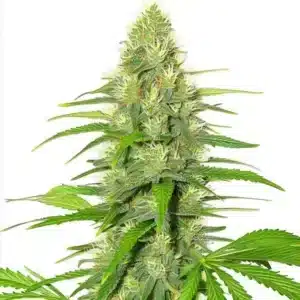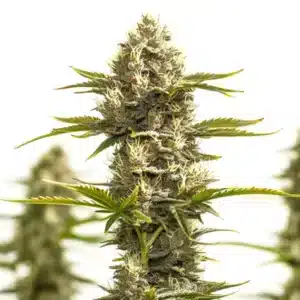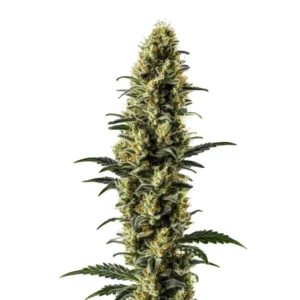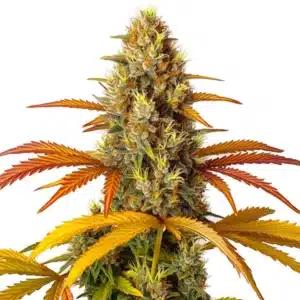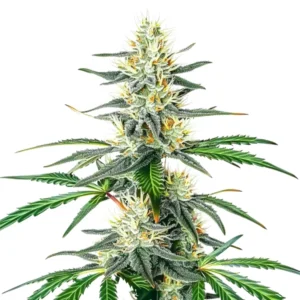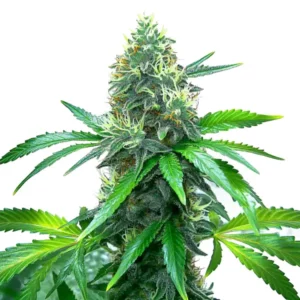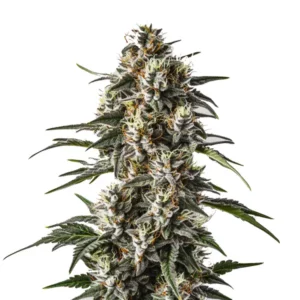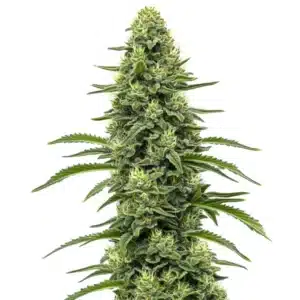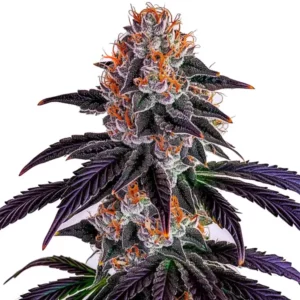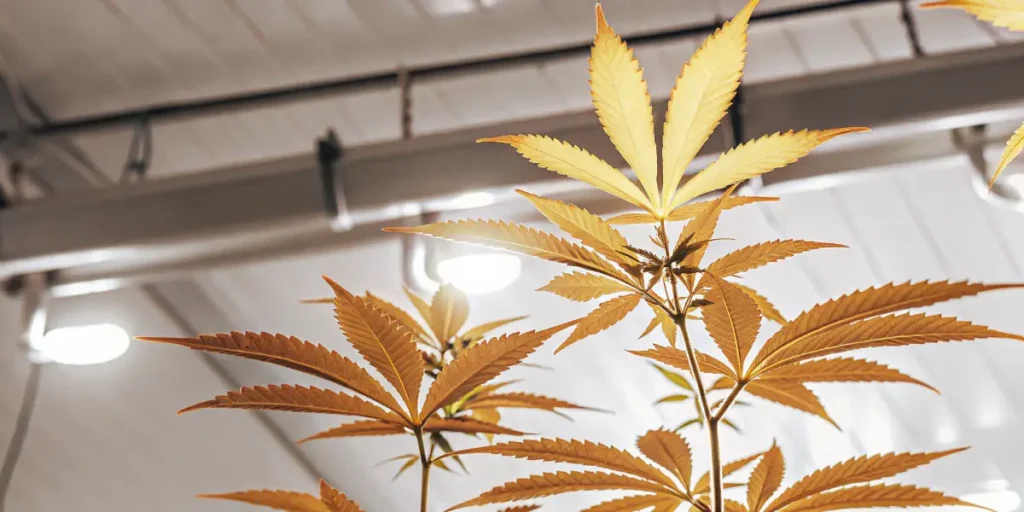
How pH Affects Nitrogen Absorption in Cannabis
Growing cannabis is both an art and a science. One key aspect that can make or break your cannabis growth is understanding how pH affects nitrogen absorption in cannabis. For those new to growing, pH refers to the acidity or alkalinity of your soil or water. It plays a crucial role in how well your cannabis plants can take in nutrients, especially nitrogen.
Nitrogen is essential for the growth of cannabis plants. It helps them develop lush, green foliage. But when the pH levels aren’t right, nitrogen absorption can be hindered. This is why understanding optimal pH levels for cannabis nitrogen uptake is vital. Without proper nitrogen absorption, your plants may show signs of deficiency, like yellowing leaves.
Recommended Strains
White Widow
|
|
THC | 18% - 25% (Medium) |
|
|
Type | Feminized |
|
|
Yield | High |
|
|
Phenotype | 45% Indica / 55% Sativa |
Blue Dream
|
|
THC | 17% - 24% (Medium) |
|
|
Type | Feminized |
|
|
Yield | High |
|
|
Phenotype | 50% Indica / 50% Sativa |
It’s important to keep your pH levels in check. Regular monitoring can prevent potential issues and ensure your plants get the nutrients they need. Whether you’re a first-time grower or a seasoned pro, knowing how soil pH impacts nitrogen absorption in cannabis can lead to healthier and more productive plants.
Why pH Levels Matter
pH levels can significantly impact how your cannabis plants absorb nutrients. When the pH levels are off, it can lock out essential nutrients, making them unavailable to the plant. This is particularly true for nitrogen, a key nutrient for growth. The effects of pH on cannabis nutrient absorption can be subtle yet damaging over time.
For cannabis, the ideal pH range is usually between 6.0 and 7.0 for soil and slightly lower for hydroponics. This range allows for optimal pH levels for cannabis nitrogen uptake. If your pH is too high or too low, it can cause nutrient lockout. This means the nutrients are present in the soil, but the plant can’t access them.
Knowing how pH affects nitrogen absorption in cannabis is crucial for maintaining plant health. The intricate balance of pH levels determines how effectively nutrients are absorbed, influencing overall plant vitality. This balance is delicate; even slight deviations can lead to nutrient deficiencies that may affect growth and yield.
Additionally, the pH influence on nitrogen efficiency in marijuana plants highlights the importance of consistent monitoring. By maintaining the right pH levels, growers can optimize nutrient uptake and minimize the risk of growth-related issues. Such proactive measures ensure that cannabis plants thrive, producing robust and healthy yields.
Promos & Deals
Monitoring and Adjusting pH
Monitoring your pH levels is straightforward but requires consistency. pH meters and test kits are readily available and easy to use. Regular testing ensures you’re maintaining the right balance. If you find your pH levels are off, adjustments can be made with pH up or down solutions, which are common in gardening stores.
Adjusting pH isn’t just about adding products. Sometimes, it involves changing your watering habits or the type of nutrients you use. For instance, using distilled water can help maintain stable pH levels. Regular adjustments can enhance pH influence on nitrogen efficiency in marijuana plants, ensuring they thrive.
To effectively monitor pH, it’s advisable to maintain a log of your readings. This practice allows you to track trends and make informed decisions about when adjustments are necessary. By understanding the effects of pH on cannabis nutrient absorption, growers can implement timely interventions to sustain optimal growth conditions.
Moreover, how soil pH impacts nitrogen absorption in cannabis cannot be overstated. Soil amendments and water quality are critical factors in this equation. By tailoring these elements to your plants’ needs, you can create an environment conducive to optimal nutrient absorption, ensuring your cannabis plants achieve their full potential.
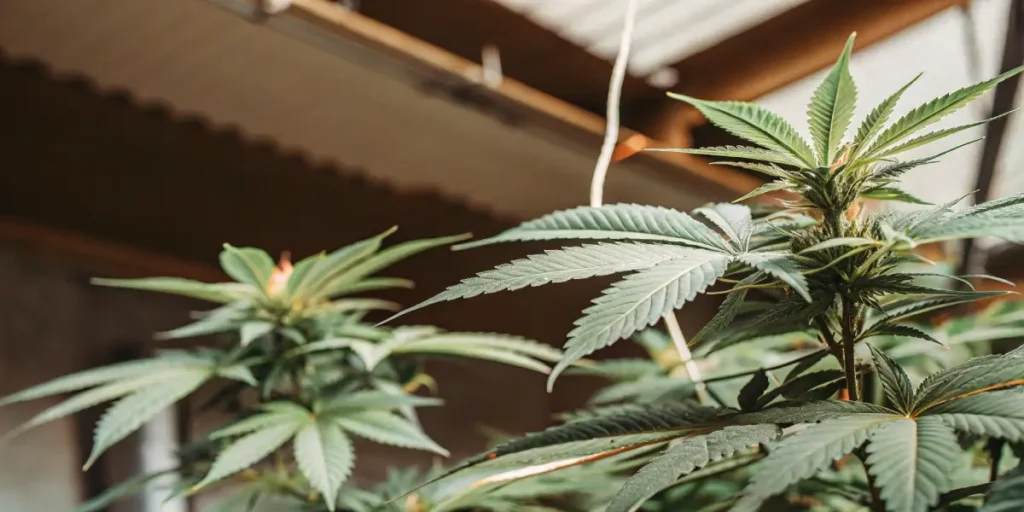
Signs of Nitrogen Deficiency
When your cannabis plants aren’t absorbing enough nitrogen due to incorrect pH levels, they will show it. The most common sign is yellowing leaves, starting from the bottom and moving upwards. This yellowing occurs because nitrogen is a mobile nutrient, meaning it moves from older to newer leaves when in short supply.
Beyond yellowing, you might notice stunted growth. Your plants may not grow as quickly or as tall as expected. This is because nitrogen is crucial for photosynthesis, the process that allows plants to convert light into energy. Without sufficient nitrogen, this process slows down, affecting overall growth.
Recognizing the signs of nitrogen deficiency early can prevent further damage to your plants. In addition to yellowing leaves, look for other indicators such as reduced leaf size and a general lack of vigor. These symptoms may suggest that cannabis nitrogen absorption at varying pH levels is suboptimal, necessitating prompt corrective action.
Addressing nitrogen deficiencies involves more than just adjusting pH. It’s about knowing the interplay between pH levels and nutrient availability. By grasping how pH affects nitrogen absorption in cannabis, growers can implement effective strategies to restore balance, ensuring their plants maintain healthy growth patterns.
Practical Tips for Optimal pH Management
Maintaining proper pH levels is an ongoing task. Here are some practical tips to keep your cannabis plants healthy:
- Test your pH regularly, at least once a week, to catch any imbalances early.
- Use pH balanced nutrients. Many nutrient solutions are formulated to maintain pH levels within the ideal range.
- Consider the type of water you use. Tap water can vary in pH, so testing it can help you make necessary adjustments.
Incorporating regular pH testing into your routine is essential for early detection of potential issues. This proactive approach enables you to address fluctuations before they impact nutrient absorption. Consistency in pH management is key to optimizing how pH affects nitrogen absorption in cannabis.
Furthermore, being mindful of the water source and its pH level can make a significant difference. Whether you’re relying on tap, distilled, or rainwater, understanding its properties helps maintain the ideal pH for optimal nutrient uptake. By combining these strategies, growers can ensure their cannabis plants flourish.
Choosing the Right Strains
+Some strains are better suited for beginners due to their flexibility in nutrient absorption. Blue Dream from Blimburn Seeds is a popular choice. It’s known for its ability to adapt to various growing conditions, including pH fluctuations.
For those seeking a challenge, try growing strains like White Widow. This strain may require more precise pH management but rewards growers with potent buds. Knowing how pH affects nitrogen absorption in cannabis can be particularly rewarding with such strains.
When selecting strains, consider their adaptability to pH variations. Strains with a higher tolerance for fluctuating conditions can simplify the growing process, making them ideal for less experienced growers. This adaptability underscores the importance of choosing strains that align with your skill level and growing environment.
Conversely, strains requiring more stringent pH management challenge growers to refine their techniques. By mastering how soil pH impacts nitrogen absorption in cannabis, growers can cultivate these demanding strains successfully, ultimately reaping the benefits of their efforts with high-quality yields.

FAQ
What is the ideal pH level for cannabis plants?
The ideal pH range for cannabis plants grown in soil is between 6.0 and 7.0. For hydroponic systems, the range is slightly lower, typically between 5.5 and 6.5. These ranges facilitate optimal nutrient absorption, including nitrogen, ensuring your plants remain healthy and productive.
Maintaining this pH range helps prevent nutrient lockout, a condition where nutrients are present in the soil or water but are unavailable to the plant. Regular testing and adjustments as needed will help maintain these optimal levels.
Knowing the optimal pH levels for cannabis nitrogen uptake is critical for ensuring your plants can access the nutrients they require. By adhering to these parameters, you minimize the risk of nutrient deficiencies and promote robust growth and development throughout the plant lifecycle.
Regular monitoring and adjustment of pH levels are essential to maintaining this delicate balance. This vigilance allows for timely interventions, ensuring how pH affects nitrogen absorption in cannabis is consistently optimized, resulting in healthier plants and improved yields.
How can I test the pH of my soil or water?
You can test the pH of your soil or water using pH meters or test kits available at gardening supply stores. These tools are user-friendly and provide quick results. For soil testing, a soil pH meter is inserted directly into the soil, while water pH can be tested using a strip or digital meter.
Regular testing is essential for maintaining the right pH levels. Consistent monitoring allows you to make timely adjustments, ensuring your cannabis plants can efficiently absorb nitrogen and other nutrients.
Accurate pH testing is foundational to knowing how soil pH impacts nitrogen absorption in cannabis. By ensuring that testing methods are reliable and precise, growers can confidently make adjustments that support optimal nutrient uptake and overall plant health.
Additionally, leveraging technology in pH testing, such as digital meters, can enhance accuracy and ease of use. These tools provide real-time data, enabling growers to respond swiftly to any deviations from the ideal pH range, safeguarding against potential nutrient lockout.
What are the signs of incorrect pH levels in cannabis plants?
Signs of incorrect pH levels include yellowing leaves, stunted growth, and smaller than average leaves. These symptoms indicate nutrient deficiencies often caused by pH imbalances, affecting how well your plants absorb nitrogen and other essential nutrients.
Monitoring these signs will help you catch potential problems early. By adjusting pH levels as needed, you can prevent long-term damage and promote healthier growth in your cannabis plants.
Early detection of pH imbalances is key to mitigating their effects on plant health. By recognizing the subtle signs of nutrient deficiencies, growers can take corrective action to restore optimal conditions, enhancing the pH influence on nitrogen efficiency in marijuana plants.
Furthermore, understanding the interplay between pH levels and nutrient availability empowers growers to make informed decisions. By addressing pH-related issues promptly, you can maintain a healthy growing environment that supports vigorous cannabis growth and development.
Can I use tap water for my cannabis plants?
Tap water can be used for cannabis plants, but it’s crucial to test its pH before use. The pH of tap water can vary and may not always be within the ideal range for cannabis growth. Using a pH meter or test strip can help determine if adjustments are necessary.
If the tap water pH needs adjustment, pH up or down products can be used to reach the desired range. Consistently using water with the correct pH ensures that your plants can efficiently absorb nitrogen and other nutrients.
Incorporating tap water into your cannabis growing regimen requires careful monitoring of its pH levels. By testing regularly, you can ensure that the water contributes positively to the overall pH balance, enhancing how pH affects nitrogen absorption in cannabis.
Moreover, knowing the variability in tap water quality can aid in making necessary adjustments. By optimizing water pH, you create a conducive environment for nutrient uptake, supporting the health and productivity of your cannabis plants.
What are some common ways to adjust pH levels?
Common methods to adjust pH levels include using pH up or down solutions, adding lime to increase pH, or adding sulfur to decrease pH. These products are widely available and can be applied directly to your soil or water as needed.
Besides to commercial products, natural methods such as incorporating organic matter or changing your watering practices can also help adjust pH levels. Regular monitoring and adjustments will help maintain optimal conditions for your cannabis plants.
Whether using commercial products or natural alternatives, the goal of pH adjustment is to create an environment that maximizes nutrient availability. By regularly assessing the effects of pH on cannabis nutrient absorption, growers can make informed decisions that promote plant health.
Additionally, understanding how soil pH impacts nitrogen absorption in cannabis can guide your choice of pH adjustment methods. Tailoring these approaches to your specific growing conditions can enhance the efficiency of nutrient uptake, leading to more vigorous and productive plants.


